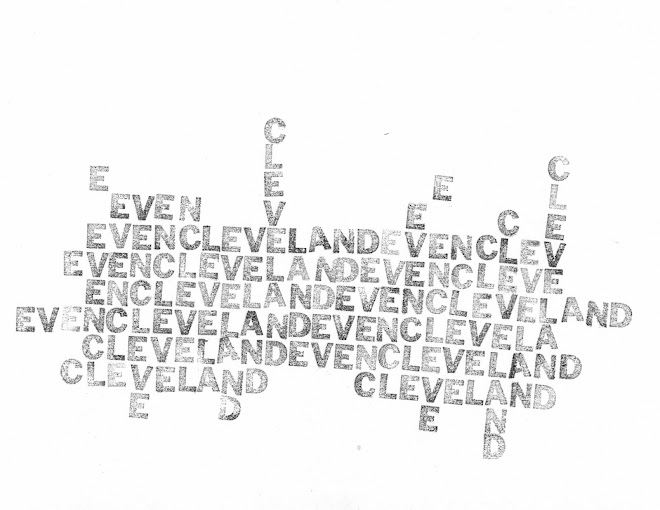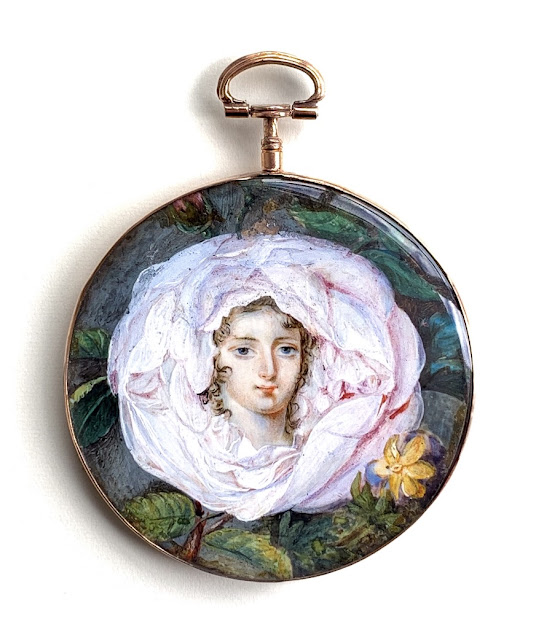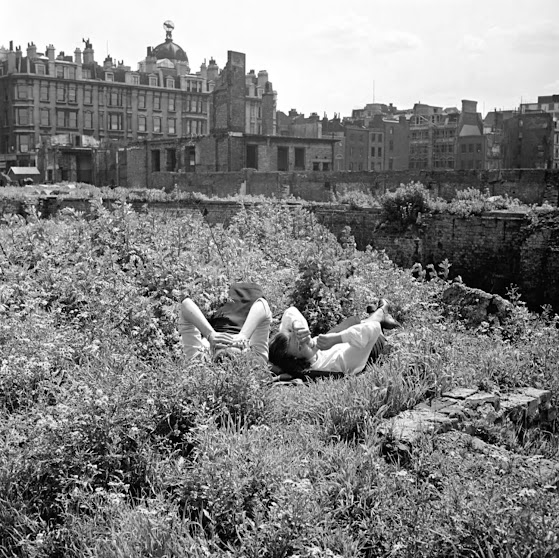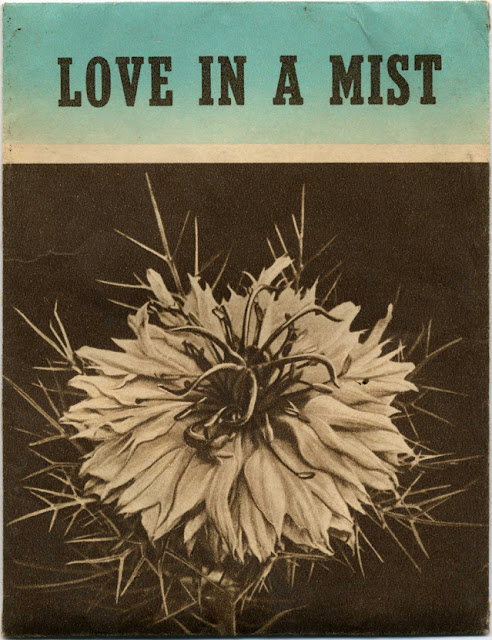*
*
*
Sennelier "Rose in Bloom" oil pastels at Choosing Keeping (also available here).
*
Two women resting beside bomb-damaged ruins in London, ca. 1950. Via Foxed Quarterly.
*
*
Love-in-the-mist seed packet from Thomas Hedley & Co., ca. 1955, collection of the Garden Museum.
*
The ticket to a flower show, ca. 1891, that inspired Tom Crewe's story, "The Fête," which is in The Paris Review, Issue 252, Summer, 2025:
Seven or eight years ago, a friend showed me a tatty packet of odd papers he’d picked up for six pounds at a sale … What got my attention right away was the remarkably pristine purple invitation to a flower show taking place on July 27, 1891. The back of the invitation, however, contained something unexpectedly dramatic. Someone had copied out another letter in a tiny hand, titling it ‘Mrs. Jacques’s account of the catastrophe that took place at this flower show.’ I read it, and felt the shiver of an idea.
From the story:
Two boys got into a fight. Another boy, Sam, kissed a girl, Mary, the two of them pressed up behind the tea tent, their feet in a rose bed, unsuspected by the aproned ladies cutting cake on the other side. For both it was their first kiss, and neither ever forgot it. Sam swore that Mary’s mouth tasted of roses.
*
And after all the weather was ideal. They could not have had a more perfect day for a garden-party if they had ordered it. Windless, warm, the sky without a cloud. Only the blue was veiled with a haze of light gold, as it is sometimes in early summer. The gardener had been up since dawn, mowing the lawns and sweeping them, until the grass and the dark flat rosettes where the daisy plants had been seemed to shine. As for the roses, you could not help feeling they understood that roses are the only flowers that impress people at garden-parties; the only flowers that everybody is certain of knowing. Hundreds, yes, literally hundreds, had come out in a single night; the green bushes bowed down as though they had been visited by archangels.
*
I could not help myself, I fell in love with the florist. Each day he handed me arrangements of flowers: lilies-of-the-valley, chrysanthemums and roses, exotic willows and violets. As a lover he was strange and melancholy: he had an intense hatred for the out-of-doors and almost never left the house; the mention of sports made him dizzy and a car moving too fast would bring him close to tears. … When he threatened to leave I became the carnation in his lapel, I was his brooch. When the weather became warm and clear, somehow it was he who wrapped me in a blanket, dragged me outside to a park; and when we made love I was the one who wilted, I felt my color brush off on his chin.
Ira Sadoff, "Seven Romances." The Paris Review, Issue no. 68, Winter 1976.
*
It was in Cut Bank that I saw the garden and the kind of gardener that I am not. In the front yard of each little house—the houses were small, bungalow-like, a style of architecture very much suited to vast expanses of landscape—were little gardens blooming with flowers. The flowers, almost without exception, were petunias (red, purple, white), impatiens, portulaca, and short, red salvia. There was one garden that seemed more cared for than the others and that had a plaque placed prominently in a garden bed that read: “Garden of The Week.”
And that is exactly the kind of gardener I am not and exactly the kind of garden I will never have. A garden made for a week is unknown to me. For years I have been making a garden and unmaking it too. It isn’t out of dissatisfaction that I do and undo, it is out of curiosity. That curiosity has not lead to stasis. It has lead to a conversation. And so it is, I have been having a conversation in the garden. And so it will be until I die.
Jamaica Kincaid, "The Kind of Gardener I Am Not." Book Post, March 9, 2025.
*








